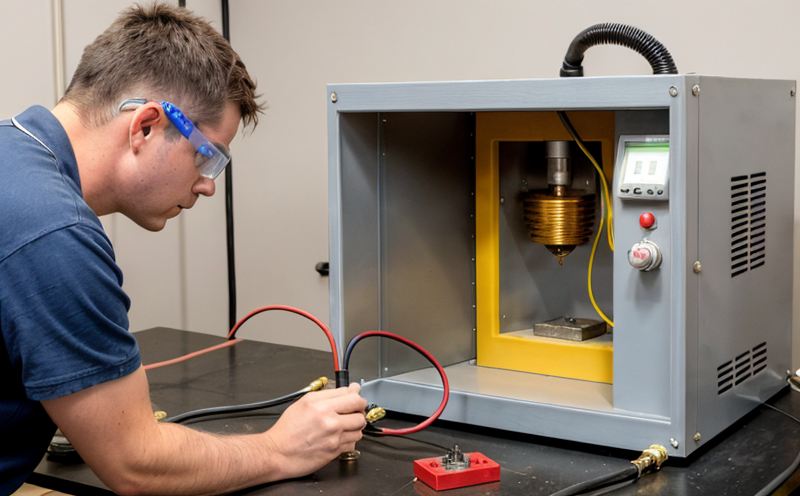ASTM B193 Resistivity of Nickel and Nickel Alloys
The ASTM B193 standard provides a precise method to determine the resistivity (resistance per unit length) of nickel and its alloys. This test is crucial in industries where electrical conductivity plays a significant role, such as electronics manufacturing, aerospace, and power transmission. Nickel's exceptional mechanical properties combined with its high thermal and corrosion resistance make it an ideal material for various applications requiring reliable electrical performance.
Resistivity testing ensures that the nickel or nickel alloy meets the specified material standards in terms of electrical conductivity. This is particularly important when manufacturing components like connectors, resistors, and circuit boards where even slight deviations can impact the overall product quality and performance. The ASTM B193 method involves measuring the resistance between two parallel electrodes placed on a sample of known dimensions.
The test procedure outlined in ASTM B193 specifies detailed steps for preparing the specimen, positioning it correctly, and conducting the electrical measurement. It emphasizes the need for precise control over environmental conditions such as temperature and humidity to minimize variables that could affect the results. Rigorous adherence to these guidelines ensures accurate and reproducible measurements.
Understanding the resistivity of nickel alloys is essential for optimizing their use in various applications. For instance, in aerospace engineering, knowing the exact resistivity helps in predicting how well a component will perform under extreme conditions. In electronics manufacturing, it aids in selecting materials that meet stringent performance requirements without compromising on durability.
The ASTM B193 standard also addresses potential challenges and common pitfalls encountered during testing. For example, improper specimen preparation can lead to inaccurate readings, while variations in temperature or humidity might introduce errors into the final results. To mitigate these issues, laboratories must follow strict protocols for specimen handling and environmental control.
By adhering strictly to ASTM B193, manufacturers can ensure that their nickel and nickel alloy products consistently meet industry standards, thereby enhancing product reliability and customer satisfaction. This standard is particularly valuable in sectors that demand high levels of precision and consistency from materials used in critical applications.
| Applied Standards | Description |
|---|---|
| ASTM B193 | Standard Practice for Determining Resistivity of Nickel and Nickel Alloys |
| ISO 6728 | Methods of Test for Electrical Conductivity of Metallic Materials Above Room Temperature |
| Industry Applications | Description |
|---|---|
| Electronics Manufacturing | Ensuring reliable electrical performance in connectors and circuit boards. |
| Aerospace Engineering | Predicting component performance under extreme conditions. |
| Power Transmission | Maintaining consistent electrical conductivity for efficient power transfer. |
- Enhances product reliability and customer satisfaction by ensuring consistent material properties.
- Aids in selecting materials that meet stringent performance requirements without compromising durability.
- Supports industries where precise control over environmental conditions is critical for accurate results.
- Facilitates the optimization of nickel alloy usage in various applications, enhancing overall product quality.
Applied Standards
| Standard Name | Description |
|---|---|
| ASTM B193 | This standard provides a method to determine the resistivity of nickel and its alloys, ensuring precise measurement for quality control in various industries. |
| ISO 6728 | An international standard that outlines methods for testing electrical conductivity above room temperature, which is essential for materials used in high-temperature applications. |
Industry Applications
| Industry Sector | Description of Application |
|---|---|
| Electronics Manufacturing | Ensuring reliable electrical performance in connectors and circuit boards. |
| Aerospace Engineering | Predicting component performance under extreme conditions. |
| Power Transmission | Maintaining consistent electrical conductivity for efficient power transfer. |
| Automotive Industry | Improving the durability and reliability of components in high-temperature environments. |
| Battery Manufacturing | Ensuring optimal performance and safety in high-power applications. |





